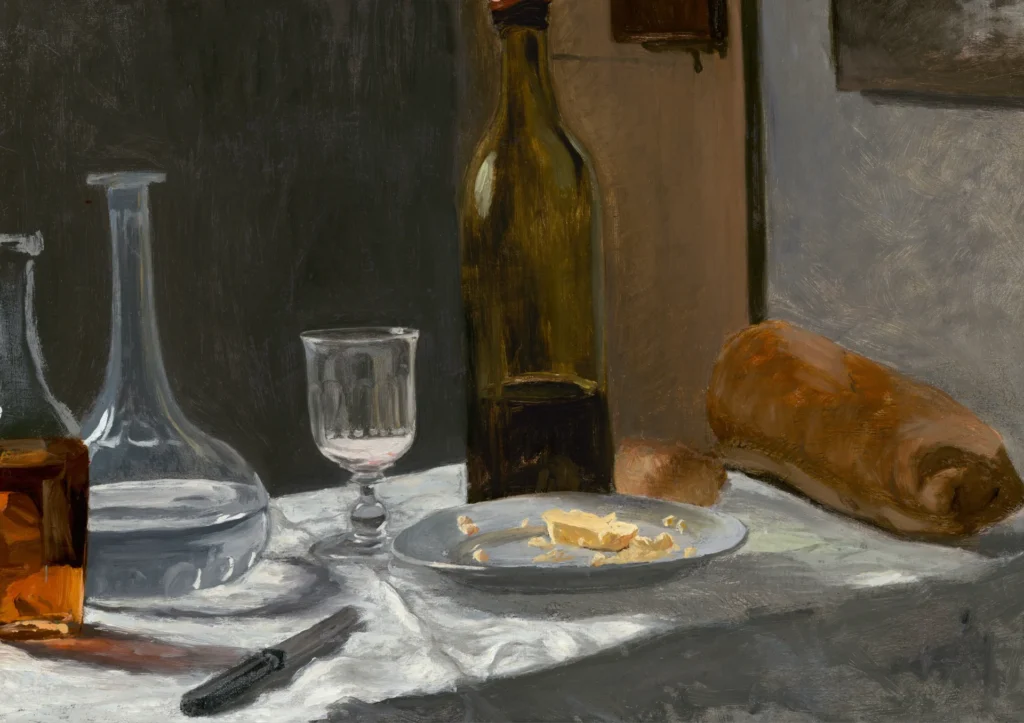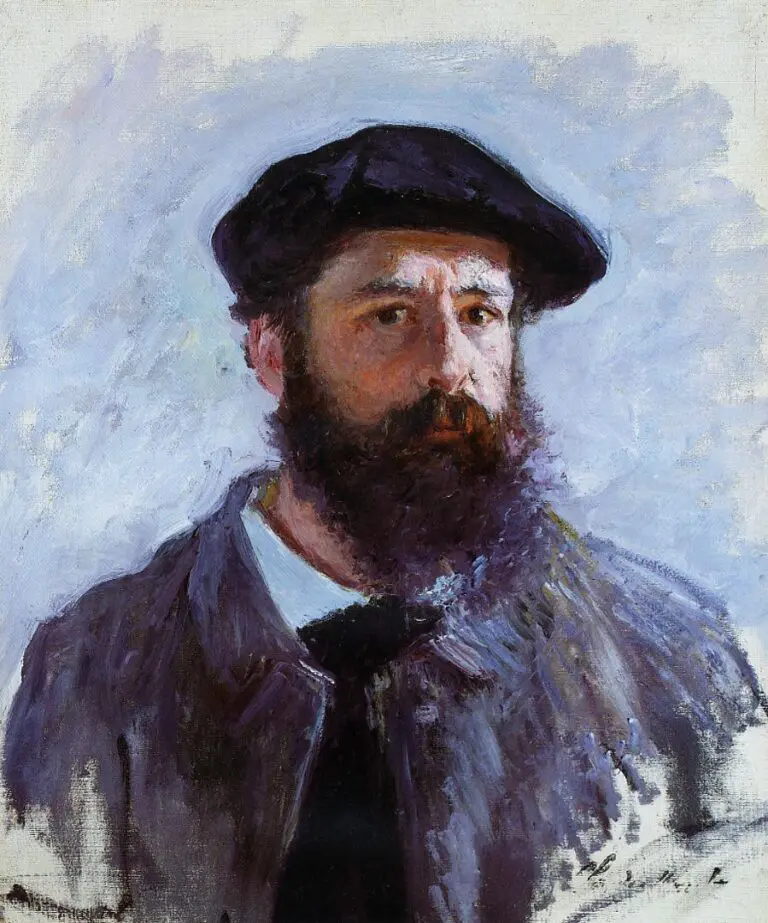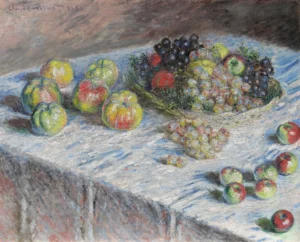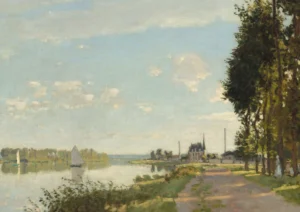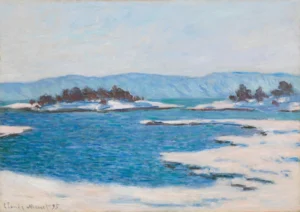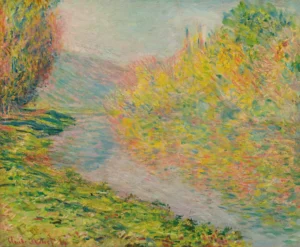Still Life with Bottle, Carafe, Bread, and Wine (1862-1863)
Still Life with Bottle, Carafe, Bread, and Wine exemplifies Claude Monet’s early exploration of still life, created around 1862-1863. This oil on canvas showcases an intricate arrangement of glass bottles, a goblet, and a loaf of bread on a white tablecloth, all masterfully reflecting the interplay of light and color. The composition combines everyday elements with Monet's experimental approach, featuring subtle ambiguities as the table merges with the wall, highlighting his interest in atmospheric effects.
1862 - 1863
About the Artwork
The creation of Still Life with Bottle, Carafe, Bread, and Wine marks an important milestone in Claude Monet's artistic development. During the early 1860s, Monet was experimenting with different styles and techniques, moving away from conventional Impressionism towards more innovative representations of light and color. This artwork was gifted to Eugene Boudin, who recognized Monet's emerging talent, and it has since traveled through various esteemed collections. Each owner has contributed to its storied history, showcasing its significance in Monet’s evolution as an artist. By the time it arrived at the National Gallery of Art in Washington, D.C., it had solidified its status as an influential work that bridges the gap between traditional still life and Monet's later landscape masterpieces.
Did You Know
Liked what you see? Add it to your collection.
Enjoyed reading? Share it.
... continued
Medium and Dimensions
The painting is an oil on canvas work, measuring 15 5/8 x 23 9/16 inches (39.69 x 59.85 cm).
Composition
The painting depicts a tightly cropped view of a tabletop, set diagonally to the picture plane. On the white tablecloth, there are three bottles and a goblet, all made of glass and filled with water, wine, and brandy. Additionally, there is a plate with butter and a knife, and a loaf of baguette at the far end of the table. The edge of the table blends into the grey wall behind, with a corner of a painting and a door visible in the background.
Artistic Focus
Monet focuses on the effects of light transmitted through the different colored glass and liquids, showcasing his early interest in light and atmosphere. The painting also exhibits ambiguities, such as the table merging into the wall, which highlights Monet's experimental approach to composition and technique.
Provenance
The painting has had several owners throughout its history. It was initially gifted by Monet to Eugene Boudin and later passed through various collectors, including Edmond Mâitre, Durand-Ruel, and the Lafon collection. It was purchased by Leigh B. and Mary Lasker Block in 1958 and later acquired by Paul Mellon. In 1999, it was bequeathed to the National Gallery of Art in Washington, D.C., where it is currently part of the Collection of Mr. and Mrs. Paul Mellon, with the reference number 2014.18.32.
Exhibition History
The painting has been exhibited in several notable exhibitions, including shows at The Royal Scottish Academy, Edinburgh, The Tate Gallery, London (1957), and the National Gallery of Art, Washington, among others.
Significance
This work is significant as it marks one of Monet's early explorations into still life painting, showcasing his promise and exceptional ability in composition, technique, and the depiction of light and atmosphere. It contrasts with his later, more famous water lily series, highlighting the development of his artistic style over his career.




